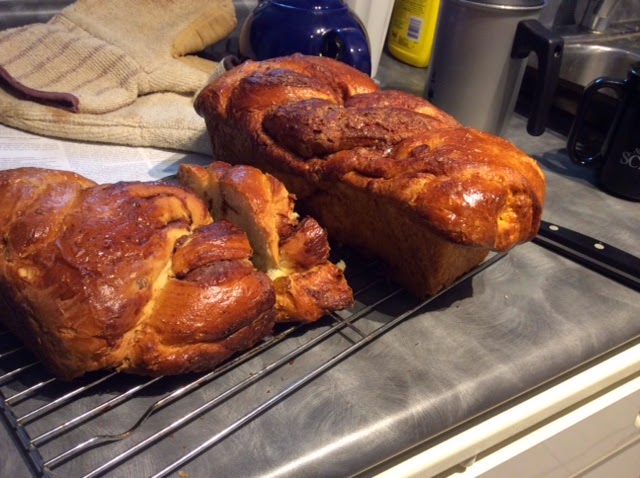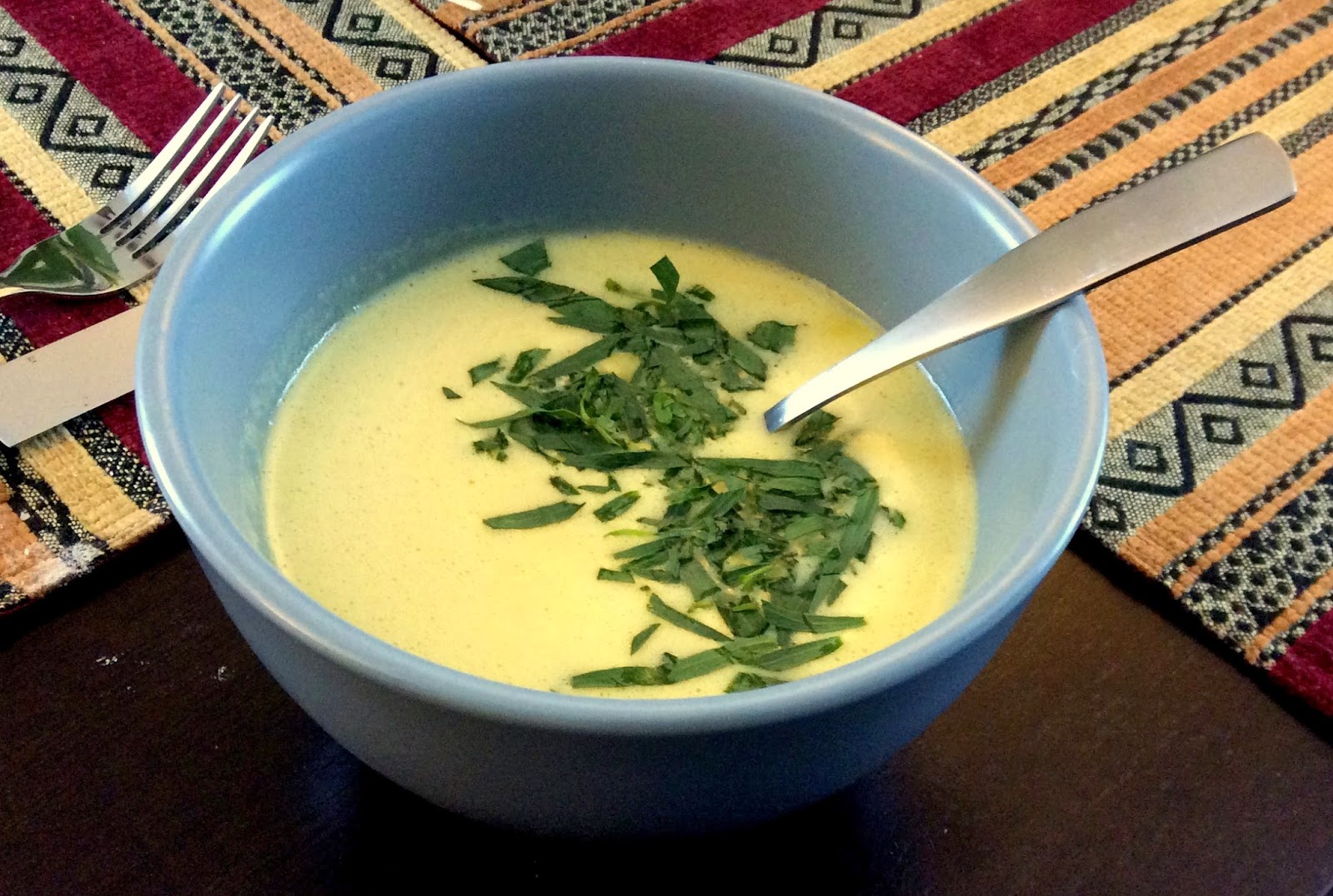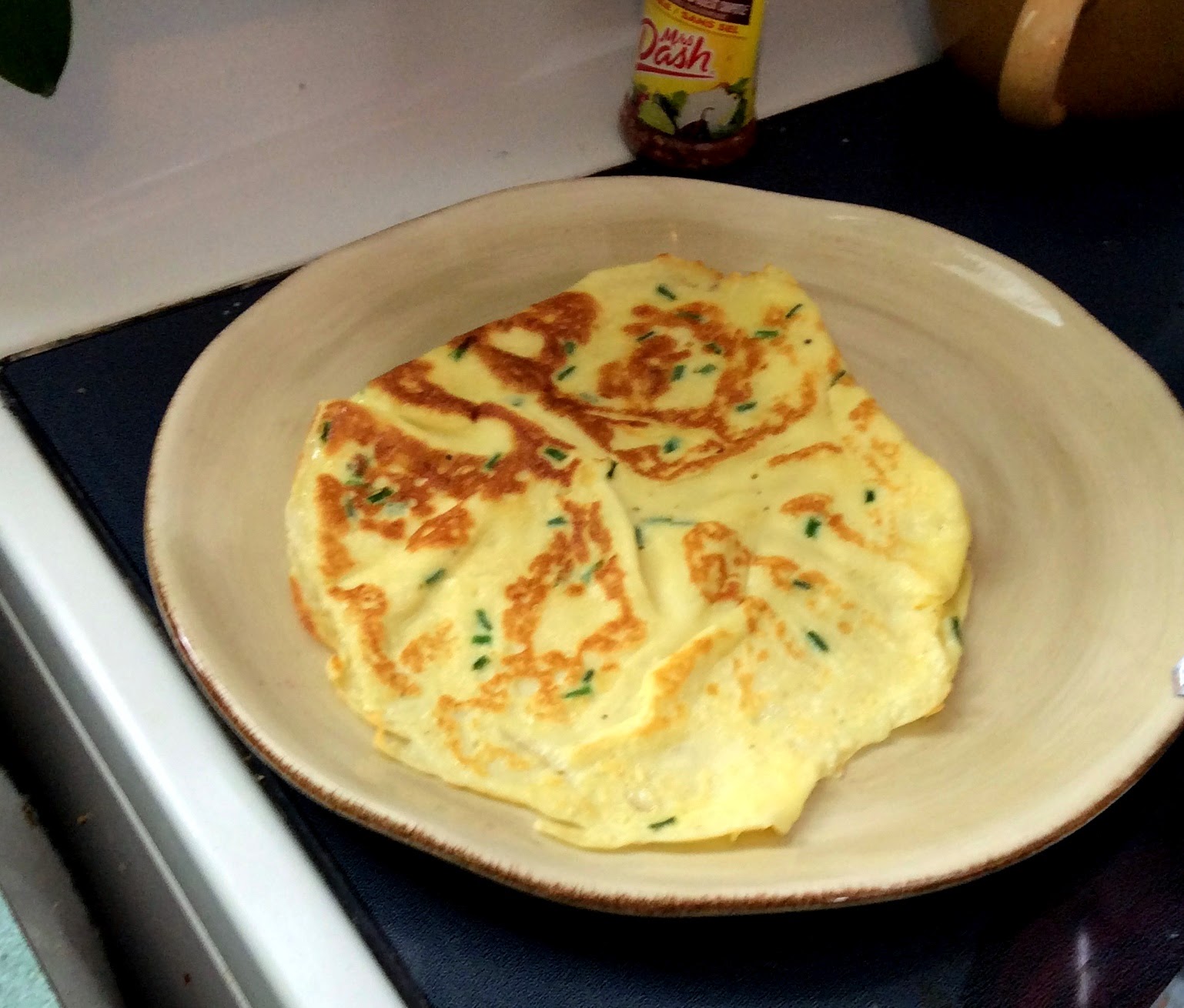Hold on to your butts, we're gonna make a Cook's Illustrated recipe. So, I'm gonna need you to block off, oh, the next 6-7 hours for this.
Seriously.
Don't get me wrong, it's delicious. But you're going to have to accept that you won't be able to go 20 feet from your kitchen for approximately 4 hours. There are steps, then half steps, then little quarter steps. This is the definition of a long-term recipe.
But, it's Cook's Illustrated, which means every part of this 180-step recipe has been tested and re-tested, so in a way, it's more or less fool proof. Or as fool proof as a yeast-based bread recipe is ever going to get.
Ingredients
Dough
8 tbsp unsalted butter
3 3/4 cups bread flour, plus extra for work surface
3/4 cup nonfat dry milk powder
1/3 cup granulated sugar
1 tablespoon (or 1 packet) instant or rapid-rise yeast
1 1/2 cups warm water (approx. 110 degrees F)
2 large eggs, lightly beaten (but keep separate)
1 1/2 tsp salt
1 1/2 cups golden raisins
Filling
1 cup confectioner's sugar
3 tbsp cinnamon
1 tsp vanilla extract
1/2 tsp salt
Method
1. For the dough
Cut butter into 32 pieces and toss with 1 tbsp floor. Set aside to soften while mixing dough.
Whisk remaining flour, milk powder, sugar, and yeast together in bowl of stand mixer. Using stand mixer fitted with dough hook, add water and 1 beaten egg and mix on medium-low speed until cohesive mass forms, about 2 minutes, scraping down bowl if necessary.
Cover mixing bowl and plastic wrap and let stand for 20 minutes.
Adjust oven rack to middle position and place a large dish, loaf or cake pan on bottom of oven. Remove plastic wrap from mixer bowl add salt, and mix on medium-low speed until dough is smooth and elastic and clears sides of bowl, 7 to 15 minutes.
With mixer running, add butter, a few pieces at a time, and continue to knead until butter is fully incorporated and dough is smooth and elastic and clears sides of bowl, 3-5 minutes longer.
Add raising and mix until incorporated, 30-60 seconds.
Transfer dough to large greased bowl and, using bowl scraper or rubber spatula, fold dough over itself by gently lifting and folding edge of dough toward middle. Turn bowl 90 degrees; fold again. Turn bowl and fold dough 6 more times (total of 8 folds).
Cover tightly with plastic and transfer to middle rack of oven. Pour 3 cups of boiling water into loaf pan in oven, close oven door, and allow dough to rise for 45 minutes.
Remove bowl from oven and gently press down on center of dough to deflate. Repeat folding process (total of 8 folds), re-cover, and return to oven until doubled in volume, about 45 minutes.
2. For the Filling
Whisk filling ingredients together until well combined; set aside.
3. Shaping and Putting the Filling in the Dough
Grease two 8.5 x 4.5 inch loaf pans. Transfer dough to lightly floured counter and divide into 2 pieces.
Working with 1 piece of dough, pat into rought 6 x 11 inch rectangle. With short side facing you, fold long sides in like a business letter to form 3 x 11 inch rectangle.
Roll dough away from you into a ball. Dust ball with flour and flatten with rolling pin into 7 x 18 inch rectangle with even 1/4 inch thickness. Using spray bottle (or flicking water with your hands), spray dough lightly with water.
Sprinkle half of filling mixture evenly over dough, leaving 1/4 inch border on sides and 3/4 inch border on top and bottom. Spray filling lightly with water (filling should be speckled with water over entire surface).
With short side facing you, roll dough away form you into firm cylinder. Turn loaf seam side up and pinch closed; pinch all ends closed. Dust loaf lightly on all sides with flour and let rest for 10 minutes.
Repeat with second ball of dough and remaining filling.
 |
| Slicing the loaf lengthwise |
4. The Russian Braid
Working with 1 loaf at a time, use bench scraper or sharp chef's knife to cut loaf in half lengthwise; turn halves so cut sides are facing up.
Gently stretch each half into 14 inch length.
Line up pieces of dough and pinch 2 end strips together. Take piece on left and lay over piece on right. Repeat, keeping cut side up, until pieces of dough are tightly twisted (this is known as the Russian Braid technique, keeping the dough together while providing escape routes for excess air). Pinch ends together. See photos below for how to braid:
 |
| Making the Russian Braid |
 |
| The completed Braid |
Transfer loaf, cut side up, to prepared loaf pan; push any exposed raisins into seams of braid.
Repeat with second loaf.
Cover loaves loosely with plastic, return to over, and allow to rise for 45 minutes.
Remove loaves and water pan from oven; heat oven to 350 degrees F.
Allow loaves to rise at room temperature until almost doubled in size, about 45 minutes (top of loaves should rise about 1 inch above lip of pan.
5. Baking (finally)
Brush loaves with a mixture of 1 egg lightly beaten with pinch of salt. Bake until crust is well browned, about 25 minutes.
Reduce oven temperature to about 325 degrees, tent loaves with aluminum foil, and continue to bake until internal temperature registers 200 degrees (I have no intention of ever checking the internal temperature of bread), which should take between 15-25 minutes longer.
Transfer pans to wire rack and let cool for 5 minutes. Remove loaves from pans, return to rack, and cool to room temperatures before slicing, about 2 hours.








